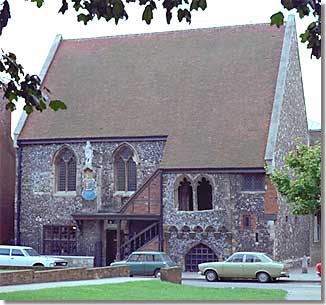
The building known as the Tolhouse was the seat of local administration in Yarmouth in the thirteenth and fourteenth centuries. A focal part of such administration was the borough court presided over by the town bailiffs, in part because the development of self-government was largely a matter of the gradual acquisition of expanded legal jurisdiction, while the revenues from fines and licenses were part of the income needed to support autonomous activities.
The precise role and importance of a borough court was varied from town to town – in part depending on whether it was in the hands of the community, or of the borough's lord. (If the latter, communal ambitions for self-government were more likely to express themselves through a Merchant Gild). It was not necessarily solely a judicial organ, but could appear in many guises, adapted to a variety of governmental functions. It might deal with contentions over matters of local by-laws or (to an extent) national law, and the jurisdictions granted the borough through royal charter grants; it administered matters relating to property and financial transactions (also governed in part by local custom), as well as supervising such matters when they involved community income or expenditures; and it served not only as a law-enforcing or law-interpreting mechanism, but also a law-making one. In a number of boroughs, including Yarmouth, enrolments of court business are the central and predominant elements of surviving medieval archives, covering a variety of records under their umbrella, with specialized records emerging only as borough business became increasingly complex.
The transfer of decision-making from the ancient and unwieldy folkmoot to a representative set of officers operating out of a building with limited capacity to host gatherings of the urban citizenry, was an early step on the transition from a primitive democracy to a more bureaucratized form of local government.
